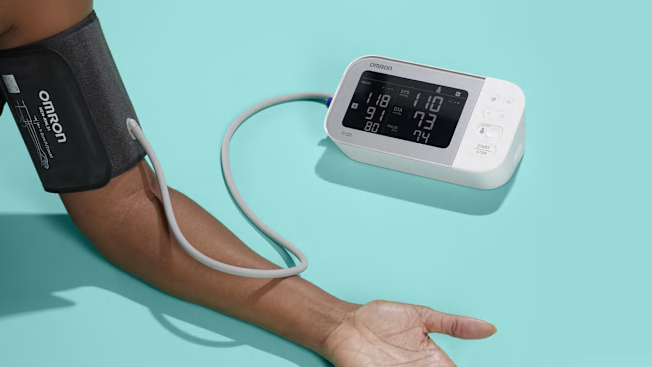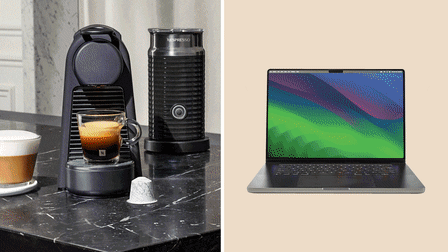5 Best Home Blood Pressure Monitors of 2026, Expert-Tested and Reviewed
Blood pressure monitors help you keep track of your numbers—and get them under control—to help prevent serious medical conditions
When you shop through retailer links on our site, we may earn affiliate commissions. 100% of the fees we collect are used to support our nonprofit mission. Learn more.

Whether or not you have a history of high blood pressure, a home blood pressure monitor can help you keep a close eye on your numbers and your health.
And tracking your blood pressure (BP) at home is, in many cases, a more reliable option for getting an accurate picture of your day-to-day levels than the readings you may get during a visit to the doctor’s office. Research suggests that self-monitoring can even lead to better blood pressure control, particularly in the first few months of using a home monitor.
Monitors with a BP risk category indicator can also help flag high measurements—when a person’s systolic (top) blood pressure measurement is 130 mmHg or higher, and diastolic (bottom) is 80 mmHg or higher. High blood pressure, or hypertension, can increase your risk of a heart attack, a stroke, and a number of other health problems.
CR tests blood pressure monitors on real people, and we compare the results with those of a mercury sphygmomanometer, the device considered the gold standard in BP testing. Accuracy makes up the bulk of the score for each monitor, but we also evaluate ease of use and comfort.
After all, “you aren’t going to want to use the product if it’s not comfortable,” says Susan Booth, who oversees the testing of home blood pressure monitors at CR.
In our testing, we’ve evaluated over 20 arm and wrist blood pressure monitors, including models from CVS, Walgreens, and Walmart. In general, we’ve found that these don’t perform as well as name-brand monitors, particularly those from Omron.
Whichever monitor you choose, keep in mind that an accurate reading depends on using the right technique. Below, you’ll find five of our top-rated home blood pressure monitors. Members can access our full blood pressure monitor ratings and reviews. For more helpful information about how to use your monitor and how to buy the best one, check our blood pressure monitor buying guide.
The Omron Evolv BP7000 monitor earns top marks for accuracy, and our testers found it to be very convenient and comfortable. Unlike blood pressure models that consist of a cuff attached via a tube to the electronic monitor, this monitor is all one piece; the monitor is embedded in the cuff. This could be useful for users who need to monitor their blood pressure while traveling. This monitor also has plenty of convenient features, including an irregular heartbeat detector, a data averaging function, and the ability to store data for multiple users. If you sync your data via the Omron Connect app, you’ll also have access to a BP risk indicator. One downside is that because of the device’s structure, if your arm is outside the 9- to 17-inch circumference range, there’s no option to sub in a different-sized cuff.
The A&D 767F monitor earns top marks for accuracy, and our testers found it to be very convenient and comfortable. We did notice that it might be difficult for some users to wrap the cuff around their own arm and align the artery marker, and we also found the fabric fastener somewhat difficult to separate. Still, this monitor offers plenty of features, including an irregular heartbeat detector, a BP risk category indicator, a data averaging function, and the ability to store data for multiple users. The cuff fits arms of 8.6 to 16.5 inches in circumference. A larger cuff for arms 12.2 to 17.7 inches in circumference can be purchased separately.
The A&D Medical UA-787EJ earns excellent ratings for accuracy, and our testers found it very comfortable and convenient as well. As with the A&D 767F, it may be difficult for some users to tighten the cuff and align the artery marker, and although the cuff is molded, it has a loose fit that can be challenging to snugly fit on the upper arm. With regard to features, this monitor has an irregular heartbeat detector, blood pressure risk category indicator, and a data averaging function. It can store memory for only one user. The included cuff fits arms 9 to 17 inches in circumference.
The iHealth KN550BT monitor scores top marks for accuracy, and our testers consider it very convenient and comfortable. This budget-friendly model is packed with features, including an irregular heartbeat detector, BP risk category indicator, a large-digit display, data averaging function, and the ability to download memory—though it can store readings for only one user. Our testers did find that the soft cuff edges can wrinkle and be hard to wrap around arms of different sizes and shapes. The monitor is also on the noisy side, and the hose can easily disengage from the port, prompting error messages. Results can be viewed on the monitor screen or synced to the iHealth MyVitals app, available for iOS and Android. The included cuff fits arm circumferences between 8.6 and 16.5 inches, or you can purchase a model with an XL cuff that fits arm circumferences between 16.5 and 18.9 inches.
The Omron BP7150 3 Series blood pressure monitor got top marks for accuracy, and testers found it very convenient and comfortable. It’s a simple, less expensive Omron unit. It comes with an irregular heartbeat detector, BP risk category indicator, and large digit display, and can be connected to a companion app. It stores measurements for only one user. The included cuff is designed for arms from 9 to 17 inches in circumference, though you can purchase a separate cuff for smaller arms 7 to 9 inches in circumference.
How CR Tests Home Blood Pressure Monitors
Accuracy is the most important component, but we also examine ease of use and comfort. To test the accuracy of a blood pressure monitor, we compare the readings from a monitor with those from a mercury sphygmomanometer, which is considered the gold-standard device for blood pressure measurement.
We note each monitor’s features, such as irregular heartbeat detection and data storage for multiple users. We also ask subjects to rate how comfortable each monitor is.






































